Includes per person per stay:
- 2 x overnight accommodation
- 2 x breakfast
- 2 x 2-course menu (Chef's choice)
4.6352785015454 of 5 Stars
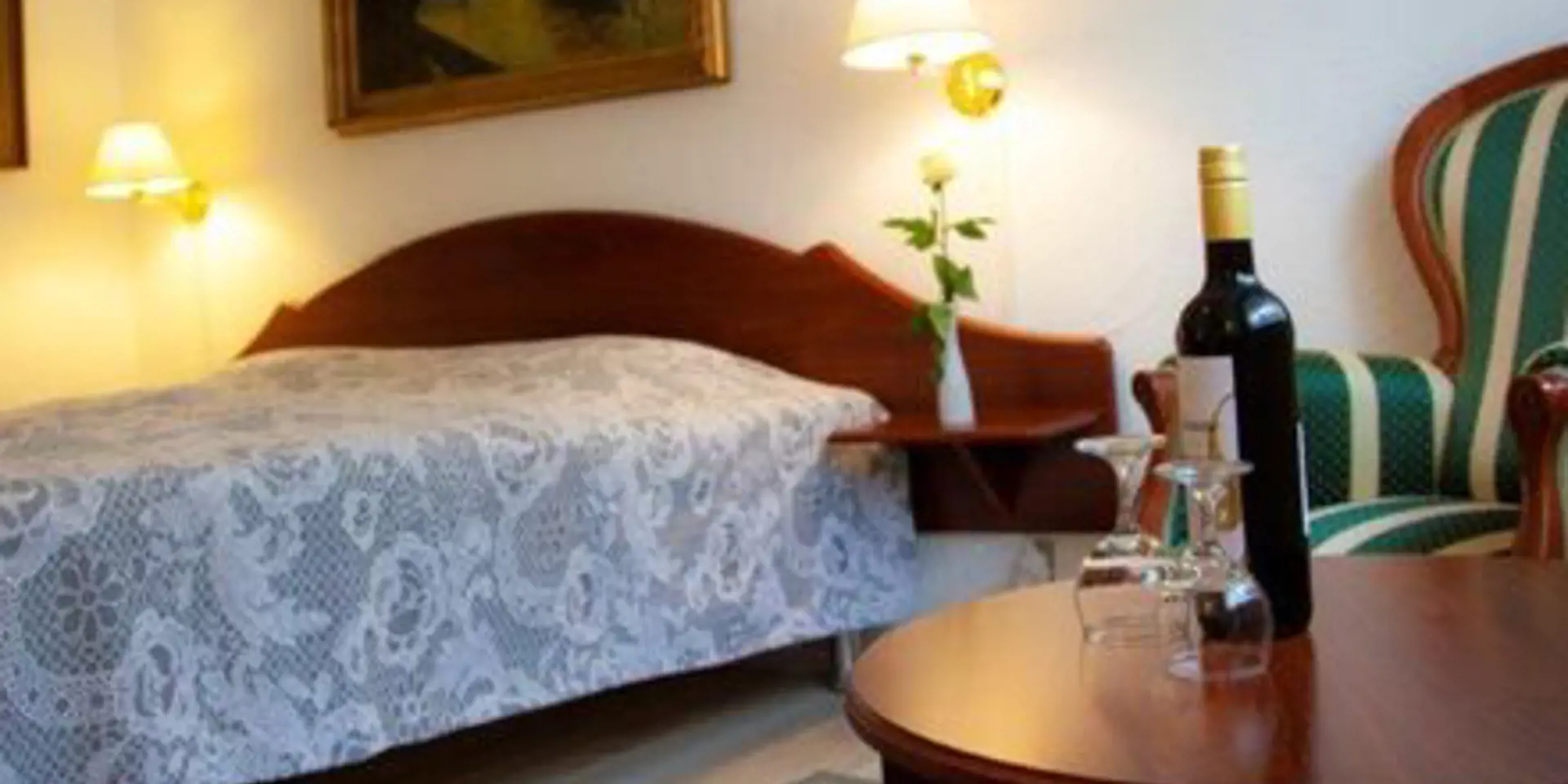
Includes per person per stay:
Click the "See calendar and prices" button to choose dates and see the room selection.
See calendar and prices: SDH Mini BreakYou will find Låsby Inn in the middle of Jutland in the beautiful and hilly nature between Silkeborg and Aarhus. There is a cozy atmosphere and the inn is furnished with all that classifies a typical inn. It's like being in another time wrap.
Hovedgaden 49, 8670 Låsby
Show map
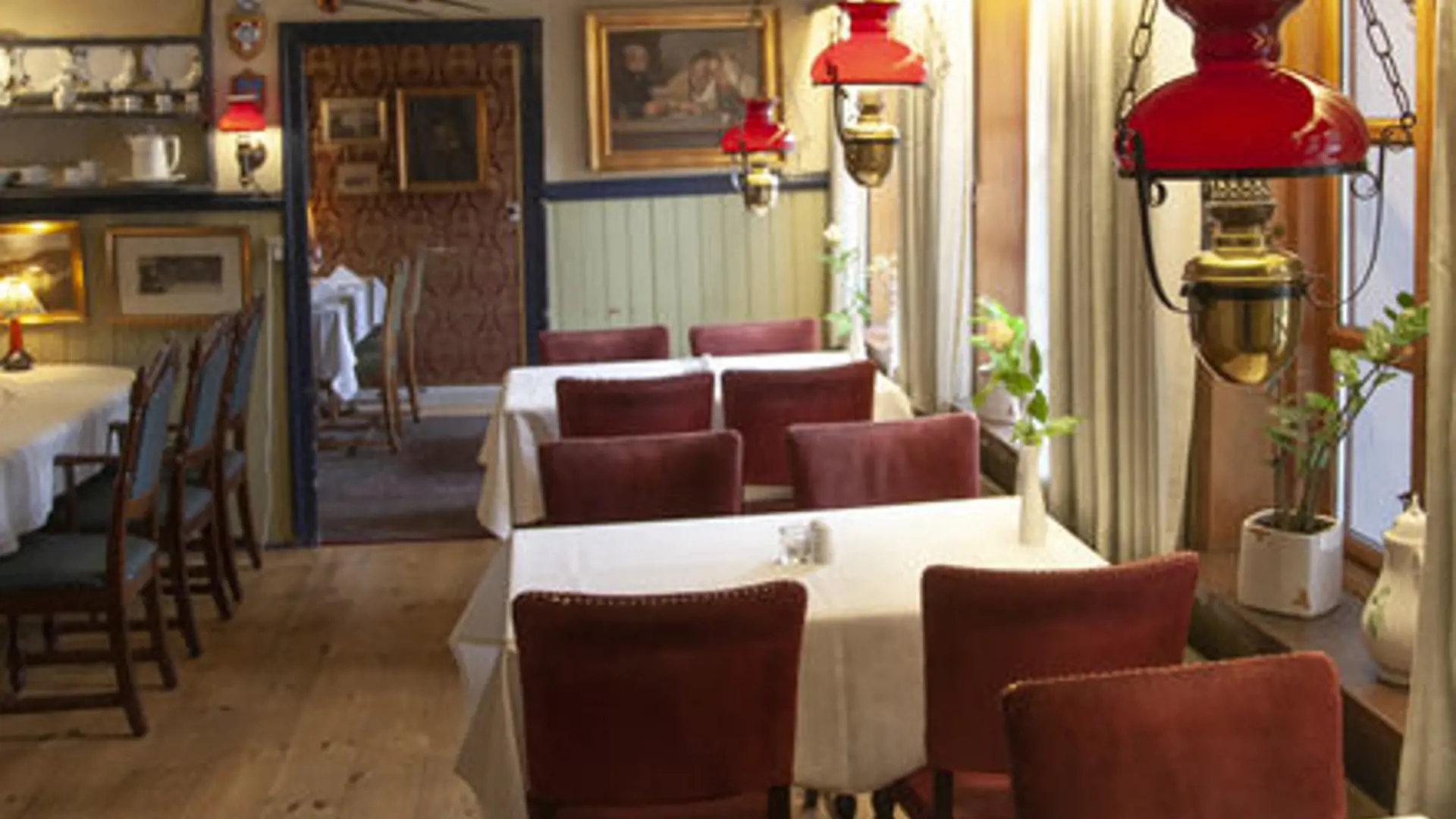
Includes per person per night:
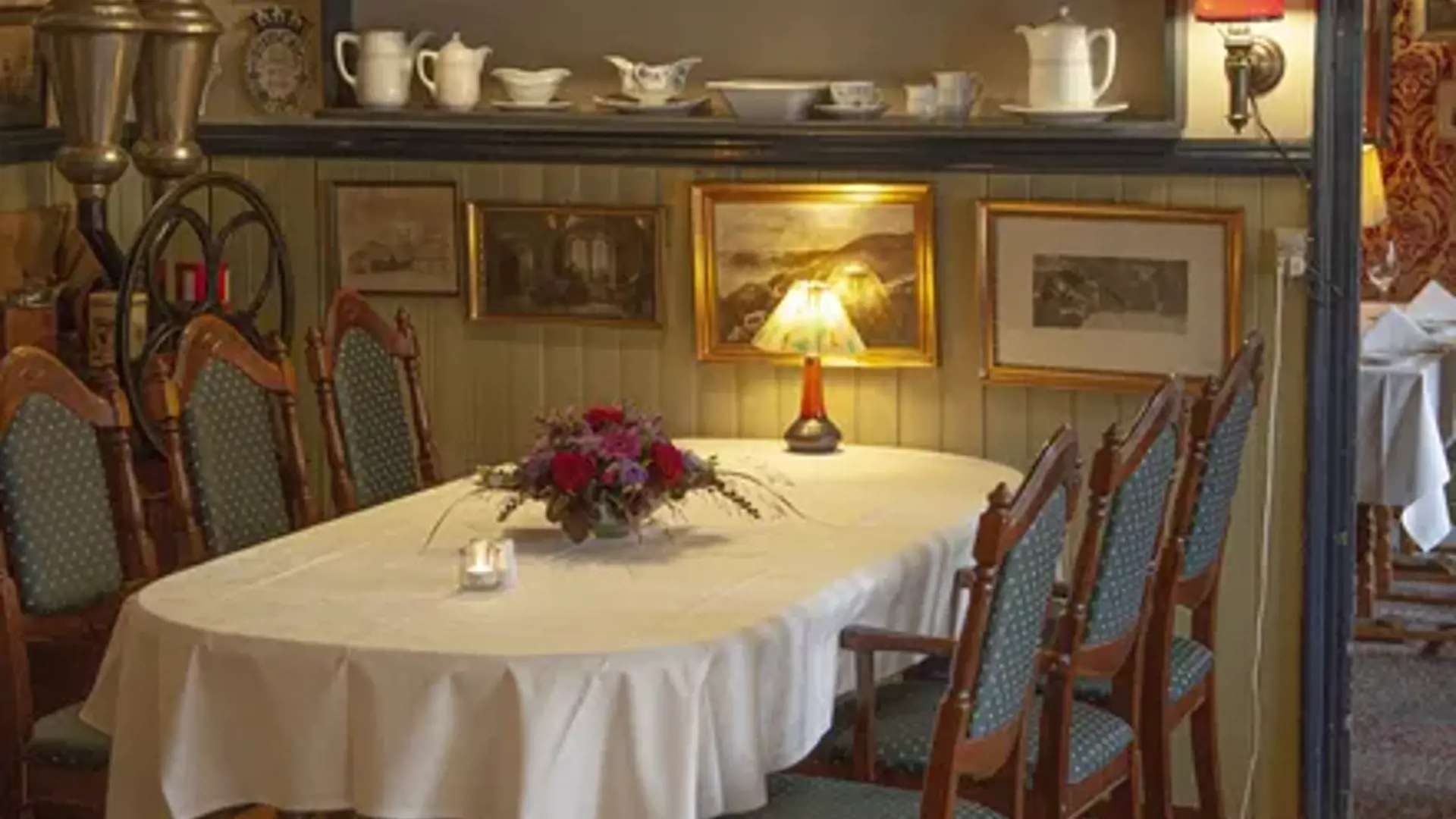
Includes per person per night:
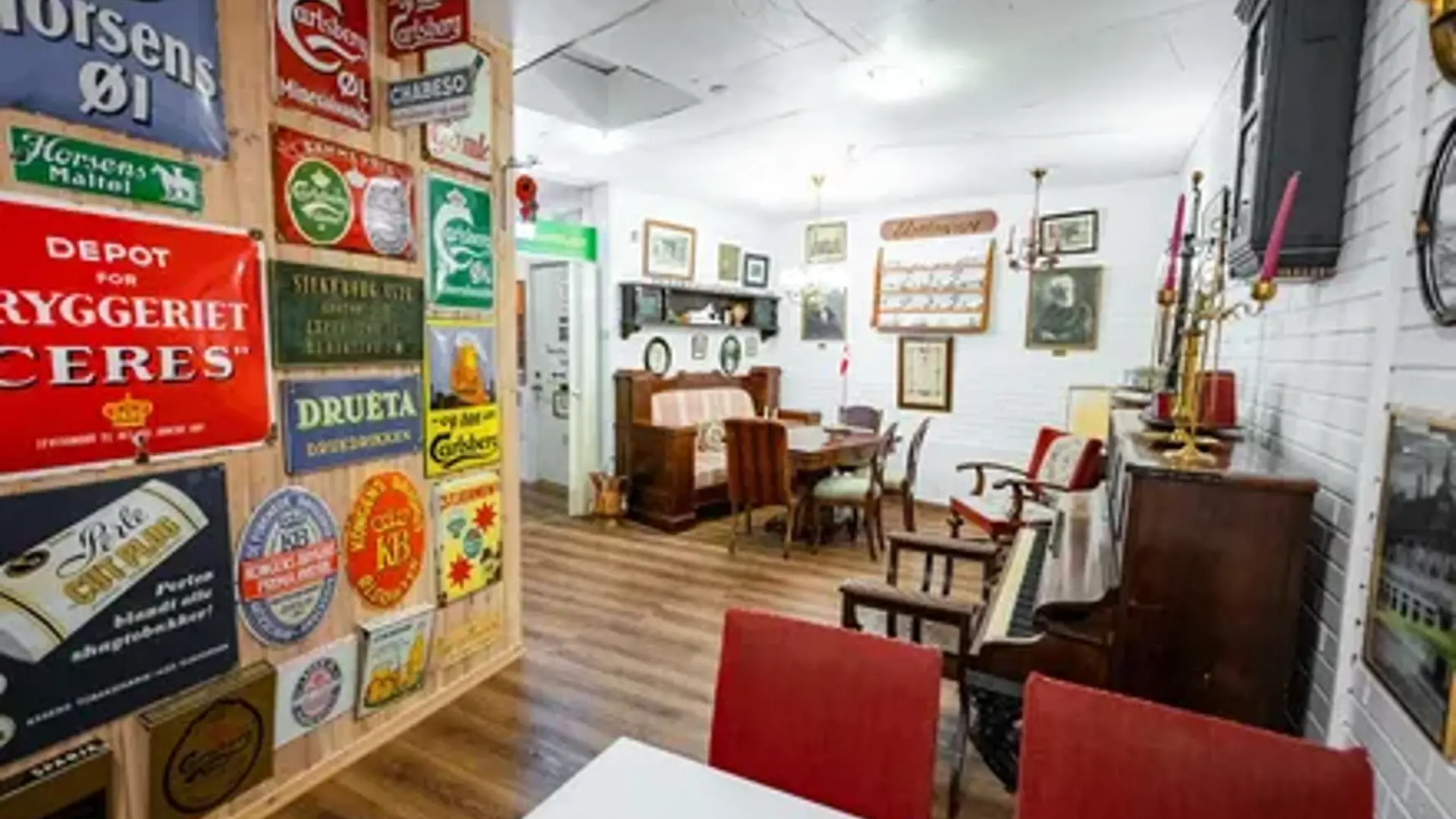
Includes per person per night:
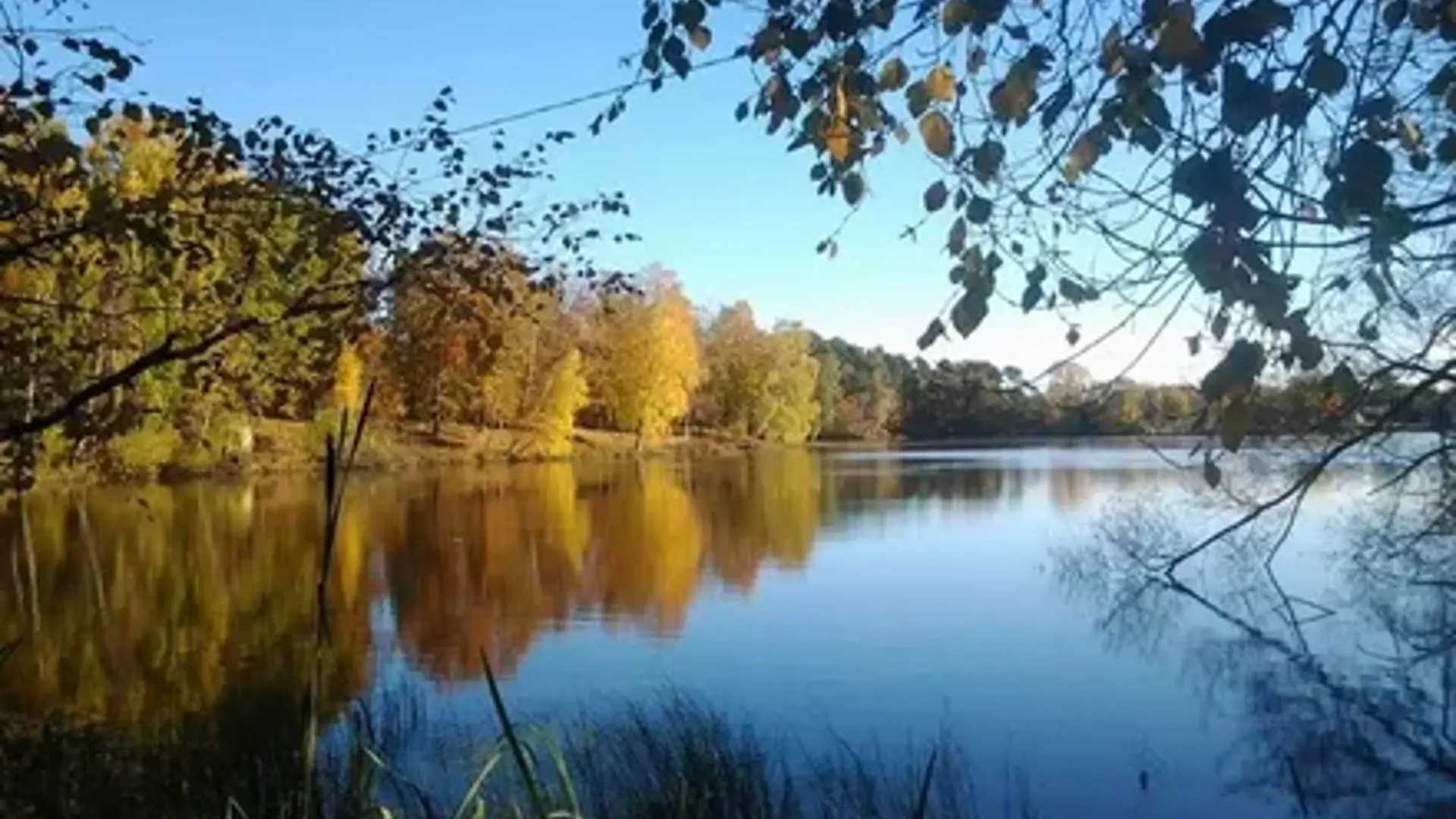
Arrival Monday - Saturday - min. 2 days / 1 night
Includes per person per night:
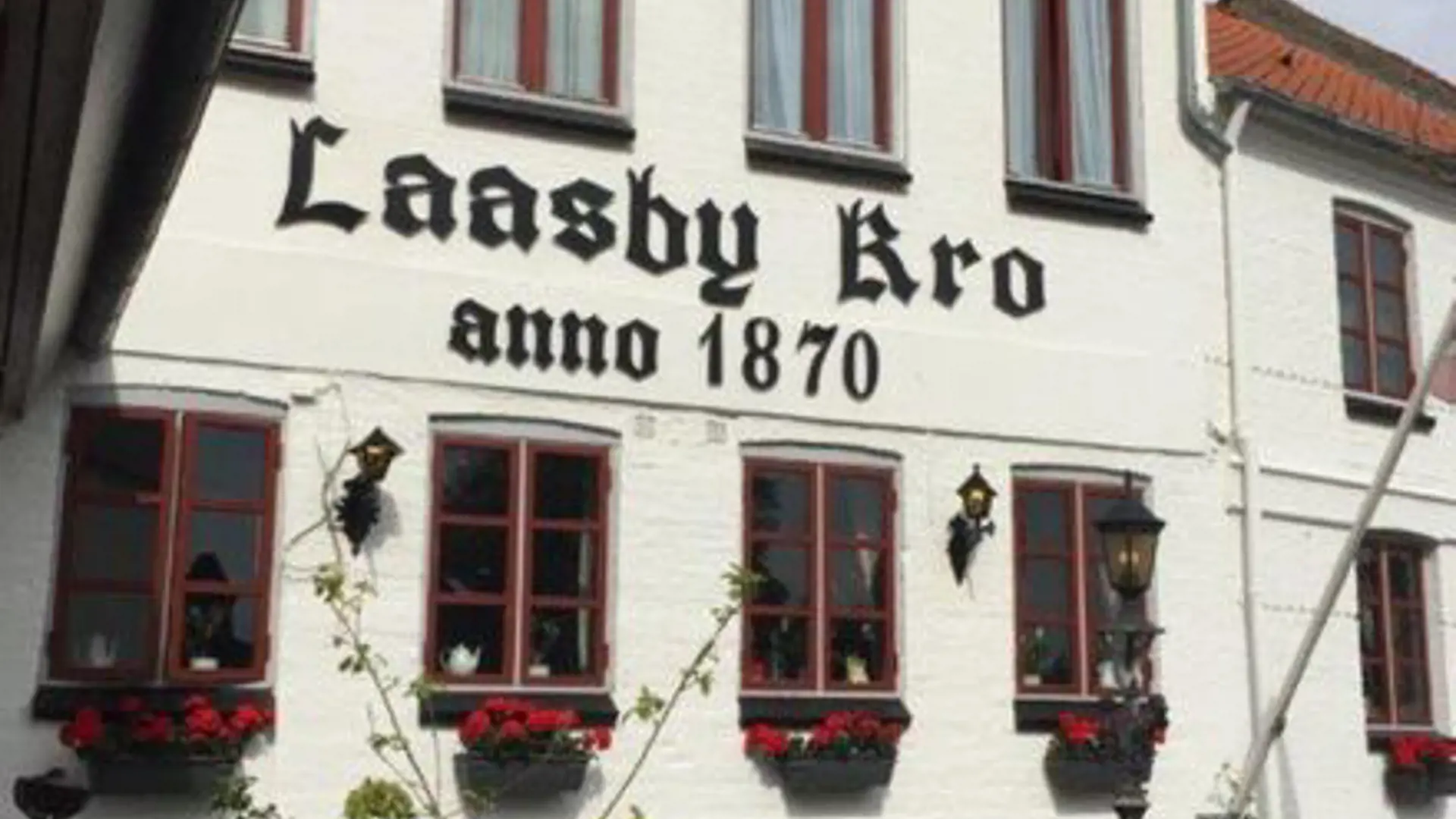
Includes per person per night:
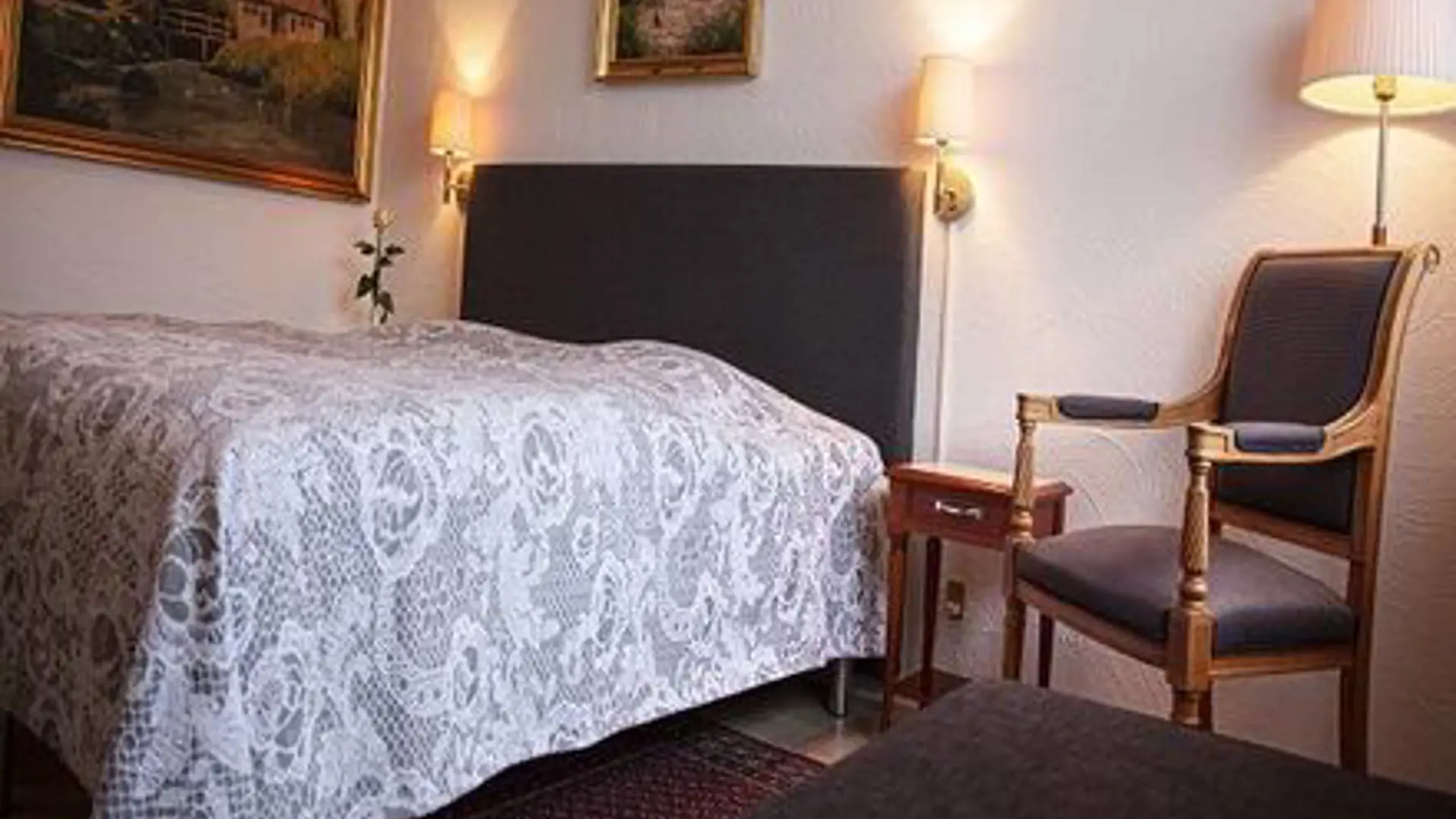
Minimum 3 days / 2 nights no stay on Sundays
Includes per person per night:

Includes per person per night:

2 days / 1 night - Arrival on Sundays from May-Dec
Includes per person per stay:
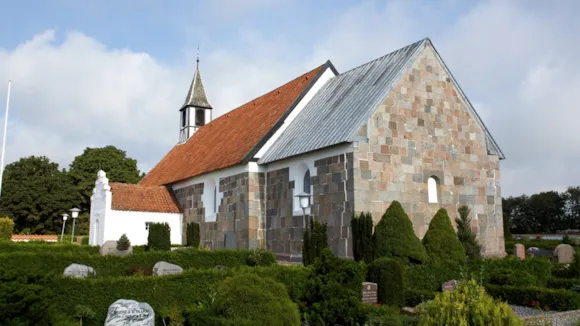
0.26 km
Very picturesque, roman natural stone building with ridge turret from around the 18th century.The south door is framed by a beautiful stone portal decorated with small human and animal figures in medallions on the lintels.
Remarkable roman granite font with double lions and a male head.
The choir arch holds an ornamental panel with fighting animals.
The writer Thor Lange had a close attachment to Låsby Church and made its name well-known through his poetry.
For further information about the church services go to the church's own website: http://www.laasbykirke.dk/kirken/kirken/
http://www.laasbykirke.dk/kirken/kirken/

9.83 km
Until the mid-19th century, Himmelbjerget was perceived as the highest point in Denmark. With its 147 meters above sea level, the legendary Himmelbjerg is certainly an impressive giant, and the steep hill down to the beautiful Julsø adds to the mountain romance.
At the top of Himmelbjerget stands the Himmelbjerg Tower, which is 25 meters high and was erected as a memorial to King Frederik VII, who on June 5, 1849, gave the Danish people their free constitution.
However, it is not only from the top of Himmelbjerget that you can enjoy a fantastic view. The forests south of the mountain hide several amazing viewpoints and good opportunities to get away from the lively visitor areas.
The area around Himmelbjerget has a large and diverse trail system, where you can take shorter walks or combine several routes to create longer ones. You can get a good overview of the marked hiking trails in the Nature Agency's brochure on Himmelbjerget, Sletten, and Slåensø.
Visit BestigBjerge.dk, embark on the 52 km long Himmelbjergrute around the lakes, or be inspired by the many other outdoor activities in the Lake Distirct here.
The name Himmelbjerget appears in writing as early as the beginning of the 18th century when a dramatic wolf hunt was held on the mountain. It is, therefore, an old local place name and not a romantic term introduced by the first tourists.
Himmelbjerget has been a popular destination for generations, and already in the late 1830s, the poet priest St. St. Blicher made the mountain famous as the setting for his folk meetings. Nowadays, people still meet on the mountain to celebrate democracy and the constitution. Landscape painters spread knowledge of the place's beauties through their depictions of hills, forests, and views. Then came beer stalls, pavilions, hotels, ice cream kiosks, and souvenir shops.
By studying the memorials on Himmelbjerget, you can also gain insight into how the Constitution of the Danish Realm came about – and even get the story in your ear as a podcast. For example, read and hear more about St. St. Blicher's memorial on Himmelbjerget, or read more about Kvinde Egen, which was planted in 1915.
According to Norse mythology, Himmelbjerget is the highest mountain in the gods' world, known as Asgard. According to the myth, the god Heimdal lives on Himmelbjerget and guards Asgard at the end of the rainbow Bifrost, to prevent giants from sneaking in.
Combine the experience with a trip on one of the Hjejle boats, as has been customary since 1861.
Since 1861, the Hjejle Company has been sailing tourists to Himmelbjerget. Therefore, souvenir stalls have also existed on the site since the 1800s. At that time, it was an offshoot of the local area's wooden shoe production, where the wooden shoe boys carved small figures and "Himmelbjerg sticks," which were sold to tourists.
See sailing times and buy tickets here.
With modern measuring instruments, it has been determined that Møllehøj (170.86), Yding Skovhøj (170.77), and Ejer Bavnehøj (170.35) are the highest points in Denmark - and they are all located in the Søhøjlandet region.
Read more about the 'hills' here.
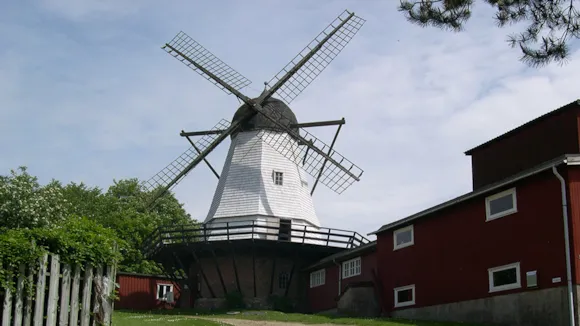
11.29 km
The mill at Gammel Rye was built in 1872 on a hill at the edge of the village. It was a working mill right up to the mid 1980s. Today the mill is exactly as it was when the miller left it, and when the mill is running, it is possible to see how grain was milled in the old days.
In the Middle Ages, the town was an important centre for trade and pilgrimage. The town prospered on several annual market days, and from the shrine of saint Severinus (St. Søren). In medieval times, the town had its own jurisdiction and outlaws were executed on the gibbet hill outside the town. A female skeleton from the gibbet hill is on display in the museum.
In the late 16th century a national glass production was established in Glarbo (glar means glass). It only lasted a few decades but produced renaissance glass of which some is on display in the exhibition.
A considerable clog industry developed in the Gl. Rye area in the 19th century. In those days, more than 186.000 pairs of clogs were sold per year. In every other house in the village, a clogmaker lived producing several pairs of clogs a day. In the museum's exhibition, you can see the tools of the clogmaker and how clogs were produced.
The museum also houses a collection of the original wooden Himmelbjerg souvenirs. These local handicraft products from the turn of the 20th century are a by-product of the clog industry.
In 1935, an airfield was established south of Gl. Rye. During the occupation of the Second World War, a German airbase was established at the airfield and after the war, it was rebuilt into a refugee camp for 12.000 German refugees, mainly from East Prussia. The museum houses an exhibition based on the life of the German refugees in the years 1945-48.
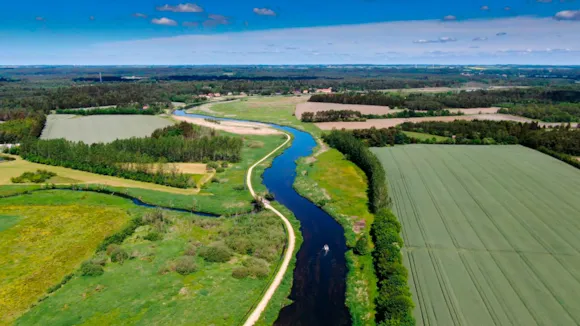
14.55 km
The Gudenå River is approximately 160 km long and the closest we in Denmark get to a "real" river. The river originates in Tinnet Krat northwest of Tørring and flows into Randers Fjord at Randers Bridge.
At Randers, Randers Fjord is forming a river delta with a number of small islands. This delta is one of the few major inland deltas in Denmark, as it was formed at the mouth of Randers Fjord rather than directly into the sea.
In the past, the Gudenå River was one of Jutland's main routes with settlements and later villages along the river. It was mainly peat and agricultural products and, with the establishment of the paper mill in Silkeborg in 1844, paper that was transported. Today, the Gudenå River attracts many to row on the river annually in either a canoe, kayak or rowing boat.
For anglers - due to the power of its water volume and depth - the Gudenå River is an challenging angling water and has a very attractive salmon fishery. In Gudenåen you can catch brook trout, sea trout, salmon, eel, pike, sand species and skull.
The trek path is a nature-tramp path that follows the Gudenåen from Silkeborg to Randers - a total of approx. 70 km. You can experience unique nature in a varied and sometimes difficult to access landscape.
A canoe trip on the Gudenå is both a scenic and challenging experience. The river is widely used during the summer by canoeists who go on a trip of one or more days duration. Sailing is allowed around the clock and throughout the year. The river is home to more than 80 plant species, of which 44 aquatic species.
Find more than 500 activities and information to do along the Gudenå.
All motor boats used on the the River Gudenå and Lakes of Silkeborg must be registered. This means your boat must have a guest number, which can be purchased here.

15.72 km
Inside, AQUA offers underwater experiences with panoramic views across large lakes, and fascinating exhibitions on the wildlife of the Danish lakes and water courses. You can discover ferocious pike through large, panoramic windows and follow the record giant catfish, which can easily swallow a whole duck. See also our otters up close when they catch fish under water.
Outside, you will find the AQUA park, which is home to our beloved beavers, otters, racoons, storks and lots of other animals. There is also a wilderness trail and a large water play area with water canons, sluices, paddling pool and other fun activities. The playground is fun for all ages. The playground consists of several activities in many heights, lock systems, gynger- and cable car, sandbox, etc. One thing is certain - remember changing clothes - you are sure to wet the playground of AQUA Aquarium & Wildlife Park.
Next to the playground is also large lunch area with barbecue facilities, Café bird table and toilets. Daily programme of activities, including animal feeding.
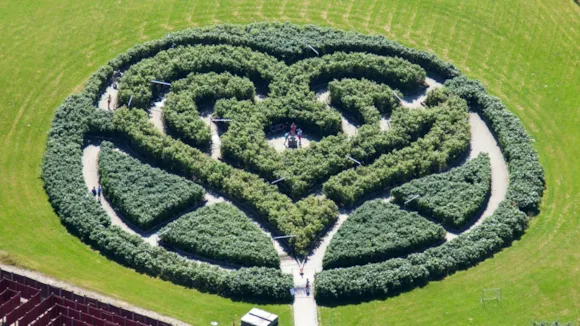
15.75 km
Today Labyrinthia has 8 different mazes/labyrinths – plus one for DOGS, and a large indoor “Puzzle Center” with many different games and brainteasers. There is something for everyone. You don’t have to queue up, and the pace – that’s up to you.
The Football Race Maze is a competition maze for all football wizards. Have a look and see what it’s all about, and compete with your family or friends to see who is best.
In the 3D-Maze you can test and challenge your sense of orientation. Download the free Labyrinthia App and scan the 8 QR codes in the 3D-Maze. Then you can download a certificate to your cell phone, so you can prove you've solved it.
You can also enjoy the sight and the scent of the hundreds of beautiful roses in the water maze (and perhaps become a bit wet!). If you download the free App, you can control the water gates in the water maze from your smartphone.
In the Dog Maze you can test the sense of orientation and sense of smell of your dog – and there is even a “doggy pub” for the four-legged.
Inside, in the “Puzzle Center”, you can use your brains solving some of the 50 different games and brainteasers at the tables.
If you need to renew your energy upon all the challenges, you can buy food and other refreshments in the café. You are also welcome to bring your own packed lunch and enjoy it outside, under the pavilion roof or on the large terrace. There is also two large gas BBQ’s at your free disposal.
You can learn more about the history of mazes/labyrinths, and also try the two historic labyrinths – the Trojaborg (a Bronze Age pattern) and the Chartres (a Middle Ages pattern). Though they are two so-called “one-way labyrinths”, they have still got some magic.
Check Opening hours and prices here.

15.75 km
Museum Jorn Museum Jorn is named after its founder, the Danish artist Asger Jorn (1914–1973), whose ambition was to make art available to all. The museum collection now comprises modern Danish and international world-class art, and the museum organises temporary international exhibitions throughout the year.
The collection at Museum Jorn foregrounds two of the most internationally influential Danish artists, Asger Jorn and Per Kirkeby (1938–2018).
The collection is the second-largest in Denmark and includes 30,000 works by more than 550 artists, featuring, for example, the Cobra artists, Max Ernst, Fernand Léger, Jean Dubuffet, Francis Picabia, Sonja Ferlov Mancoba, Georg Baselitz, and Markus Lüpertz.
A visit to Museum Jorn is a journey into the colourful and experimental universe of Asger Jorn. In the museum workshops and activity stations within the exhibition spaces, all visitors can explore and try out Jorn’s many techniques and materials.
The museum shop sells art books, posters, quality design products, souvenirs, and much more. Overlooking the idyllic river Gudenaa, the Café Cobra serves lunch, tea, coffee, and cakes, as well as wine and snacks.
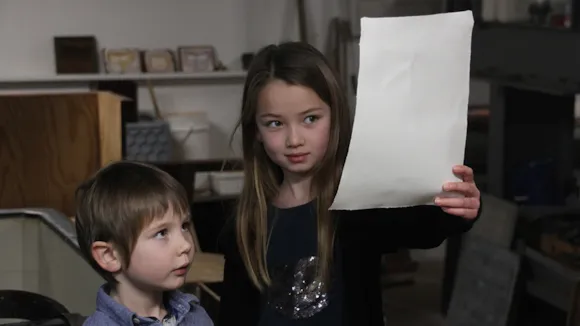
15.96 km
The Paper Museum is part of Museum Silkeborg and is a living museum where handmade paper is still produced and where you can experience the magical moment when the milky water mass suddenly becomes a sheet of paper. You can also explore an exhibition about Danish papermaking through the ages and about Silkeborg Paper Mill, as well as experience changing exhibitions related to paper production.
You can also visit the tower at the Paper Museum, where you can see Silkeborg from 70 metres above ground. The Paper Tower is located in the centre of the new Papirfabrikken district, where Silkeborg Paper Factory operated until 2000.
Get up the tower by booking a guide in advance.
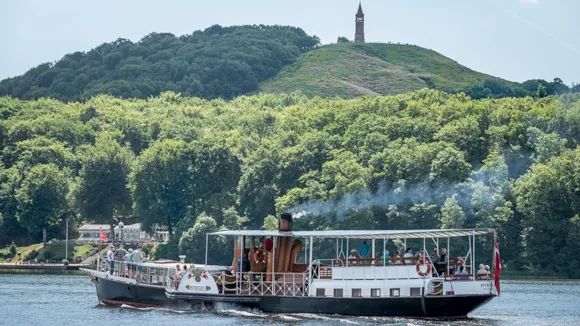
16 km
Hjejlen is the world’s oldest original coal-fired paddle steamer still in operation. Daily throughout the summer, Hjejlen and the other excursion boats in the Hjejle fleet sail from Silkeborg to Himmelbjerget and on to the small station town of Laven.
Over the years, s/s Hjejlen has been joined by eight ‘sisters’, each with their own history and charm. They are different from the paddle steamer Hjejlen and show the evolution of boatbuilding over time. Every summer, the Hjejlen fleet brings the scenic lakes to life, and it's exciting to combine the beautiful sailing on the different boats with lunch stops and experiences along the way.
The trip from Silkeborg to Himmelbjerget takes 1 hour and 15 minutes. Finally, you have the opportunity to experience the scenic Silkeborg lakes on an evening trip on board Hjejlen or one of the other boats.
View timetable on Hjejlen’s website here.
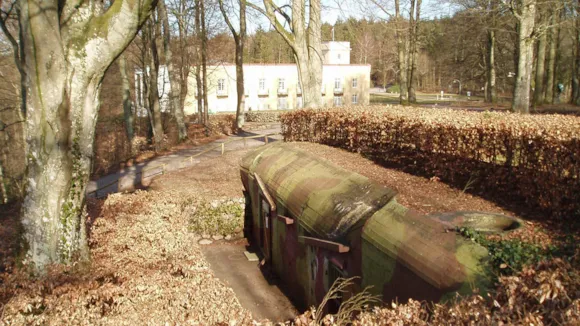
17.91 km
The bunker is one of around 12 large concrete bunkers, which, together with 30 smaller bunkers, were the German military headquarters in Denmark from 5 November 1943 to 6 June 1945.
After the occupation, many German refugees were housed in the area, and their story is also told in the exhibition.
The exhibition includes a large collection of weapons and other effects from that time. There are uniforms and items of equipment, and much more besides.
There are posters with maps, documents and photos from the area during and after the occupation.

24.38 km
Marselisborg Castle offers a unique location with unobstructed views of both sea and forest. The castle is secluded from its surroundings, surrounded by a charming English-style castle garden. The garden features small lakes, a rose garden, an herb garden and an impressive collection of artworks, including sculptures by His Royal Highness Prince Henrik. The Palace Garden at Marselisborg Castle is open to the public all year round, except when the royal family is staying at the castle.
Marselisborg Castle was designed by the royal building inspector, Hack Kampman. The castle opens to the west with an impressive entrance and two miniature towers that also adorn the Customs House in the centre of Aarhus. The building is decorated with maritime motifs, including seagulls in the window carvings and beautifully carved seashells in the front door, accompanied by a fish above the door.
The beautifully planted Palace Garden, which also includes a stunning rose garden, is open for visits when the royal family is not staying at Marselisborg Castle.
When the royal family is not at the castle, you can enjoy a stroll through the breathtaking gardens and parks. Experience Marselisborg Castle's scenic areas and peaceful atmosphere when the gardens are open to the public.
However, we are not always updated on when the royal family is in Aarhus. The family uses Marselisborg Castle both for official visits and to enjoy holidays in the beautiful surroundings.
The garden is open:
April 1st - September 30th: 8:00 AM - 9:00 PM
October 1st - March 31st: 9:00 AM - 4:00 PM
You can see the Royal Family's calendar here and keep track of when they visit Aarhus.
Please note that the garden is closed approximately one week before and one week after the visit.
When the royal family is at Marselisborg Palace, there is a change of guard with the Royal Life Guard every day at 12.00.